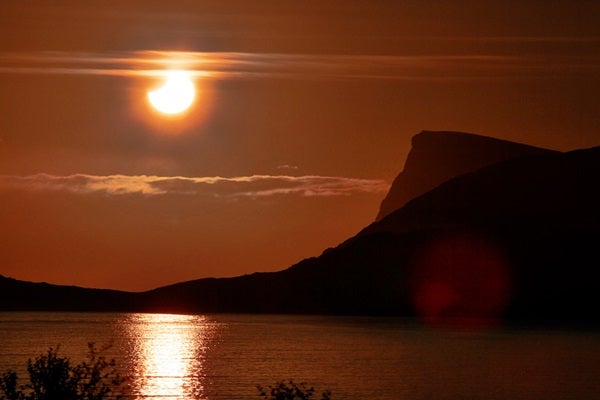On September 13, people in southern Africa, southern Madagascar, and parts of the Indian Ocean and Antarctica can witness a near-perfect alignment of the Sun, the Moon, and Earth as a partial solar eclipse occurs.
If you’re not one of the lucky few to be in the eclipse path, don’t fear. Our friends at Slooh have you covered. They’ll be broadcasting live views of the eclipse starting at 12:30 a.m. EDT with commentary from Astronomy Contributing Editor (and Slooh Astronomer) Bob Berman and solar researcher Lucie Green.
Solar eclipses occur when the Moon covers all (a total eclipse) or some (a partial eclipse) of the Sun’s surface. Solar eclipses always occur at New Moon because our satellite must lie between the Sun and Earth. We don’t see a solar eclipse every month, however, because the Moon’s orbit is tilted to the Sun-Earth plane. Most of the time, the Moon passes slightly above or slightly below the point where an eclipse would be possible.
The greatest eclipse on the 13th occurs at 6h54m10s UT at longitude 2.3° west and latitude 72.1° south. Unfortunately, even if you were to venture to this inhospitable location, the Sun would be just below the horizon. If you could see it, the Moon at that point would be blocking 74 percent of our daytime star’s visible surface.
The best sites on land for this partial solar eclipse that are not part of the frozen continent are around Cape Town, South Africa. There, the event starts shortly before sunrise, so viewers under clear skies will see the Sun rise already partially eclipsed. The event peaks at 7:43 a.m. local time. At maximum, the Moon will block 31 percent of the Sun’s brilliant disk.










